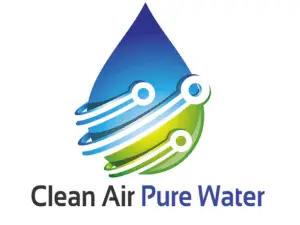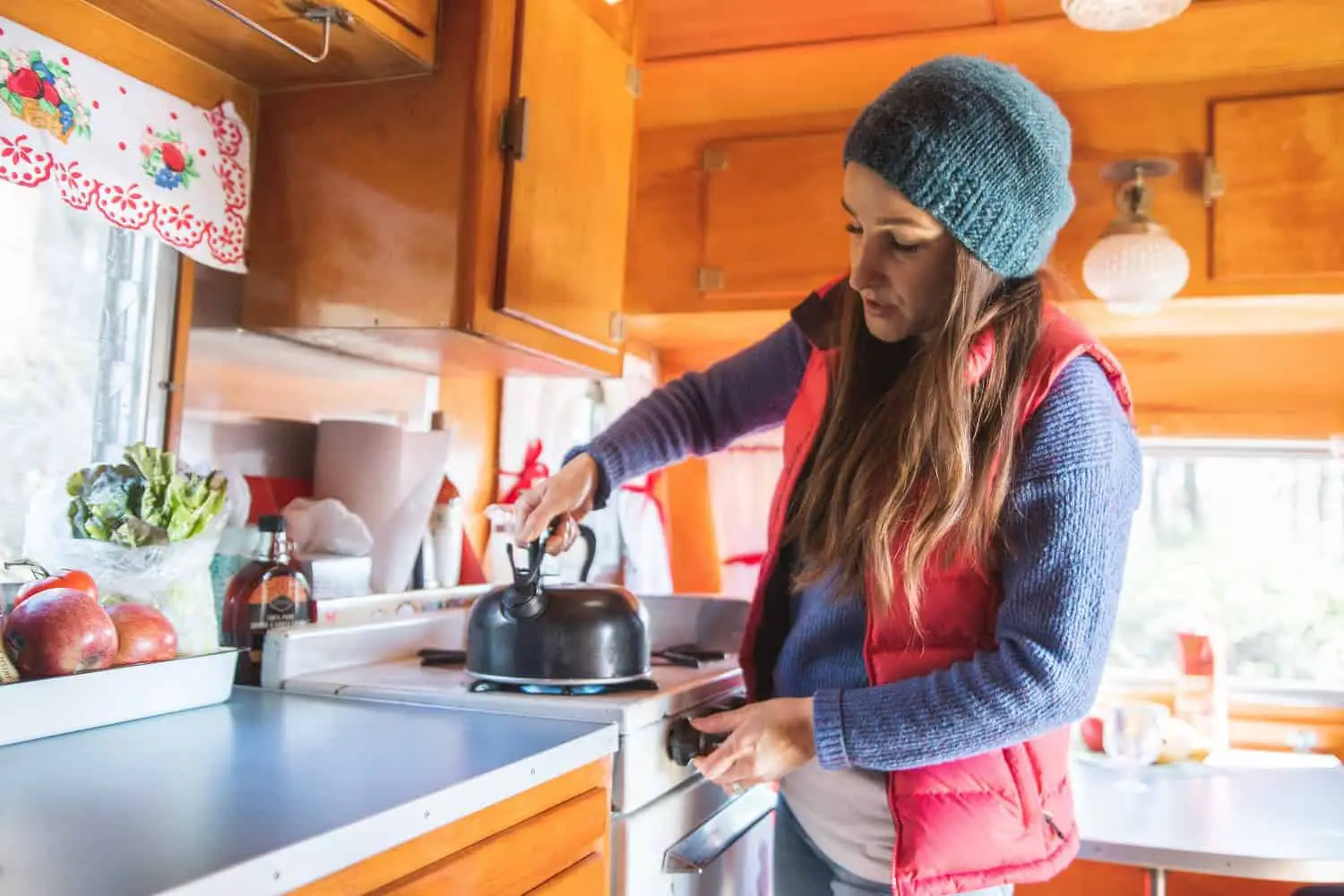Sometimes, circumstances require that we boil water before it is safe to drink. This can happen during hurricanes or when water systems are malfunctioning or in need of repair. Other times, we may be camping or hiking outdoors and need to ensure that surface water is safe to drink. The Centers for Disease Control (CDC) advises what to do if you get a “boil water advisory” from your local health authorities, but how long can it be stored at room temperature?
Boiled water can be stored for 6 months at room temperature. This statement relies on adherence to CDC guidelines, which dictate that the water was boiled according to their advisory. It should be stored in sanitized containers and placed in locations with a room temperature not above 70°F (21°C).
The following paragraphs explain how to disinfect water by boiling it properly. They provide the recommended containers, sanitation guidelines, and conditions for storing boiled or safe water. Also addressed are ways to be certain that boiled water remains safe to use for drinking and what to do to improve the taste.
What Is Meant by Room Temperature?
There seems to be no set temperature or range for the term room temperature. Most sources and popular beliefs say that it means about 70°F (21°C). Wikipedia refers to several sources that describe it as anywhere from 68-78°F (20–25.5°C).
It’s important to know the exact meaning of room temperature when asked if boiled water can be stored at room temperature. According to the CDC, the room temperature should be in the range of 50-70ۜ°F (10-21°C). In other words, not over 70°F or 21°C.
What Are the CDC Guidelines for Boiling Water?
The CDC advises you to either use bottled water or boil your water anytime your health department issues a boil water advisory to prevent you or other household members from getting sick.
The CDC says that boiling is the surest method we can use to destroy bacteria, viruses like COVID-19, and parasites such as cryptosporidium. It provides the following method as the best way to go about boiling water to ensure safety. The process will involve an extra set of steps if the water is cloudy.
Cloudy Water
- Use a clean cloth, coffee filter, or paper towel to filter out particles, or allow them to settle to the bottom of the container.
- If settling is used, carefully pour out the clear water into a pot for boiling.
Clear Water
- Boil the clear water for at least 1 minute (3 minutes if you are at a high elevation above 6500 feet or 1981 meters).
- Remove from heat and allow the water to cool to room temperature.
- Store the cooled boiled water “in clean sanitized containers with tight covers.”
What Are Proper Storage Containers for Boiled Water?
The CDC recommends food-grade containers like these 5-gallon Collapsible Water Storage Cubes.
According to USA Emergency Supply, which sells FDA-approved food-grade buckets and containers, “If you get used buckets, only use buckets you know have already been used to store food and haven’t been used for anything else. You can find these at bakeries, ice cream manufacturers and parlors, large restaurants or kitchens, or food processing plants.”
This source also advises that you should be sure that the new containers are FDA-approved for storing food or water, warning that some containers have dyes in the plastic and are not acceptable and that HDPE recycled containers are not food grade.
CDC adds that if possible, it’s best to use a container with a narrow opening for pouring and important that it has a tight-fitting lid.
How Do You Sanitize a Container Used to Store Boiled Water?
The CDC offers the following steps for sanitizing containers:
- Wash and completely rinse the container. The CDC doesn’t specify what to wash it with, but only fragrance-free detergent should be used, consistent with its advice to use only unscented bleach. Health Alberta advises using “hot soapy tap water,” which should also be fragrance-free and eco-friendly, like Seventh Generation’s Free and Clear Dish Liquid.
- To sanitize, add 1 teaspoon ( 5mL) of “unscented liquid household chlorine bleach” that “contains 5–6% sodium hypochlorite” to one quart (liter) of water.
- Tightly cover the container, then shake it, making sure that the bleach solution “touches all inside surfaces.”
- After 30 seconds or more, empty the solution.
- Air-dry the sanitized container before filling it with the boiled water, or rinse it with safe (boiled) water before filling it.
- After filling it with cooled boiled water, be sure to secure the lid tightly.
Advice for Storing the Filled Containers and Using the Boiled Water
After filling the sanitized, food-grade containers with your safe, boiled water, the CDC says you should do the following:
Storing the Containers
- Label the containers with the date of storage and what’s in them, such as “boiled water,” or “safe drinking water.”
- Place these filled containers in an area where the temperature stays consistently between 50-70°F(10-21°C).
- Keep the containers away from direct sunlight. Alberta Health suggests putting the containers inside dark plastic bags such as trash bags if a dark room is not available.
- Keep them far away from areas where toxic products or chemicals such as pesticides, herbicides, gasoline, or motor oils are present.
You may find additional information on storing boiled water in this article I wrote titled “Can You Boil Water and Refrigerate It?”
Using the Stored Water
- Avoid contaminating the water by:
- Using a clean scoop every time you remove water if a scoop is used
- Not touching the water or inside the container when using a scoop
- Not using your hands to scoop water
- Go by the storage date to replace the water every six months.
What If the Boiled Water Tastes Flat?
The CDC recognizes this could be an issue and advises that you try pouring it out of one container into another and letting it stand for a while or adding a pinch of salt to each quart (liter). Health Alberta says all you have to do is leave enough space in the container to shake and add air to water, which should solve it.
Do Most Sources Agree with the CDC About Storing Boiled Water at Room Temperature?
Alberta Health Services agrees with the CDC that properly boiled and stored water remains safe to drink for 6 months, as long as the containers are well-sealed. The overall consensus seems that boiling the water sanitizes it, and then storing it in a well-sealed, sanitized container keeps it that way for months.
However, to be on the safe side, you might want to move water from the large container you have opened for use to smaller sanitized containers that can be refrigerated. This could prevent opening and closing repeatedly and possibly contaminate the water in a large container.
Alberta Health says it’s ok to reuse “clean, disinfected 2-litre plastic pop bottles with tight-fitting screw caps to store water.”
Final Thoughts
The CDC’s website on “Making Water Safe in an Emergency” states that the safest source of emergency water to use for drinking and everything else is bottled water. However, it also says that boiling the water will also provide you with safe water when bottled water is not available.
In some cases, you may prefer to boil tap water, even when there’s no emergency or boil advisory, just to get the cryptosporidium and some of the chlorine out before drinking it. It’s good to know that if you boil it properly and store it properly, it will remain safe for up to six months.
In case you want to be sure of the quality, after it’s been stored several months already, you can choose to have it tested before drinking it, or you could boil it again as you need it and drink or use it when it’s cooled.
Sources
- CDC: Boil Water Advisory
- CDC: Making Water Safe in an Emergency
- CDC: Creating and Storing an Emergency Water Supply
- CDC: Cryptosporidium and Drinking Water from Private Wells
- Wikipedia: Room Temperature Definition
- USA Emergency Supply: Using Food Storage Buckets and Containers
- Environmental Public Health, Alberta Health Services: Storing water during a Boil Water Advisory
- EPA: Home Drinking Water Testing Fact Sheet

